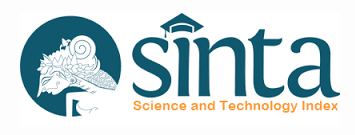KEKERASAN SIMBOLIK PADA PROGRAM ACARA FESBUKERS RAMADAN 2017 DALAM SEGMEN RUMAH MIRING (RUMING) EDISI BUKA PUASA
Abstract
Symbolic violence is not physical or psychological violence. If these two forms of violence can be easily recognized, symbolic violence is very difficult to recognize. Symbolic violence can occur at any time and without realizing it. The purpose of this study is to find out the symbolic violence that is present in the program "Pesbukers Ramadan 2017" in the sloping (Ruming) house segment of the break fasting edition. This study uses a mix of methods or a mixture of qualitative and quantitative methods. There are 30 episodes studied, each lasting approximately 10 minutes. The results of this study indicate, there are 298 times the occurrence of symbolic violence in the Pesbukers Ramadan program in the sloping home segment, as well as the many meanings of semiotics of violence that arise in the program both euphemism, swear, sexual, and attributes.References
Alimuddin, Andi. 2015. Televisi & Masyarakat Pluralistik. Jakarta: Prenadamedia Group.
Armando, Ade. 2016. Televisi Indonesia di Bawah Kapitalisme Global. Jakarta: Kompas Media Nusantara.
Bourdieu, Pierra. 2012. Kekerasan Simbolik di Sekolah: sebuah ide sosiologi pendidikan. Jakarta: RajaGrafindo Persada
Bungin, Burhan. 2010. Metode Penelitian Kualitatif. Jakarta: Rajawali Pers.
Cangara, Hafied. 2016. Pengantar Ilmu Komunikasi : Edisi Kedua. Jakarta: Rajagrafindo Persada.
Djamal, Hidajanto. 2013. Dasar-dasar Penyiaran: Sejarah, Organisasi, Operasional, dan Regulasi. Jakarta: Prenadamedia Group.
Deddy, Mulyana. 2014. Semiotika dalam Riset Komunikasi. Bogor: Ghalia Indonesia.
Eriyanto, 2011. Analisis Isi: Pengantar Metodologi untuk Penelitian Ilmu Komunikasi dan Ilmu-Ilmu Sosial Lainnya. Jakarta: Kencanaprenada Media Group.
Fiske, Jhon. 2012. Pengantar Ilmu Komunikasi. Jakarta: RajaGrafindo Persada.
Kriyantono, Rachmat. 2008. Teknik Praktis Riset Komunikasi. Jakarta: Kencanaprenada Media Group.
Kriyantono, Rachmat. 2010. Teknik Praktis Riset Komunikasi. Jakarta: Kencanaprenada Media Group.
Morissan. 2015. Manajemen Media Penyiaran: Strategi Mengelola Radio dan Televisi. Jakarta: Prenada Media Group.
Morissan. 2013. Teori Komunikasi Massa: Media, Budaya dan Masyarakat. Bogor: Ghalia Indonesia.
Nawiroh. 2016. Komunikasi Massa. Bogor: Ghalia Indonesia.
Notoatmodjo, Soekidjo. 2005. Metodologi Penelitian Kesehatan. Jakarta: Rineke Cipta.
Nurudin.2017. Ilmu Komunikasi: Ilmiah dan Populer. Jakarta: RajaGrafindo Persada
Onong Uchjana Effendy. 2008. Dinamika Komunikasi. Bandung: Remaja Rosdakarya.
Syamsudin, Munawar. 2013. Metode Riset Kuantitatif Komunikasi. Yogyakarta: Pustaka Pelajar.
Tamburaka, Apriadi. 2013. Literasi Media: Cerdas Bermedia Khalayak Media Massa. Jakarta: RajaGrafindo Persada.
Taniredja, Tukiran, dan Hidayati Mustafirdah. 2012. Penelitian Kuantitatif Sebuah Pengantar. Bandung: Alfabeta.
Vera, Nawiroh. 2016. Komunikasi Massa. Bogor: Ghalia Indonesia.
Werner, James. 2014. Teori Komunikasi: Sejarah, Metode, dan Terapan di Dalam Media Massa. Jakarta: Prenadamedia Group.
Internet
http://blog.unnes.ac.id/bahasaindonesia/2016/03/16/memahami-disfemisme-bahasa-media.
http://www.kpi.go.id/index.php/id/regulasi/peraturan-kpi.
https://lizafisioterapi.blogspot.co.id/2016/05/pengertian-analisis-univariate.html.
Once an article was published in the journal, the author(s) are:
granted to the journal right licensed under Creative Commons License Attribution that allows others to share the work with an acknowledgment of the work's authorship. permitted to publish their work online in third parties as it can lead to wider dissemination of the work. continue to be the copyright owner and allow the journal to publish the article with the CC BY license receiving a DOI (Digital Object Identifier) of the work.





